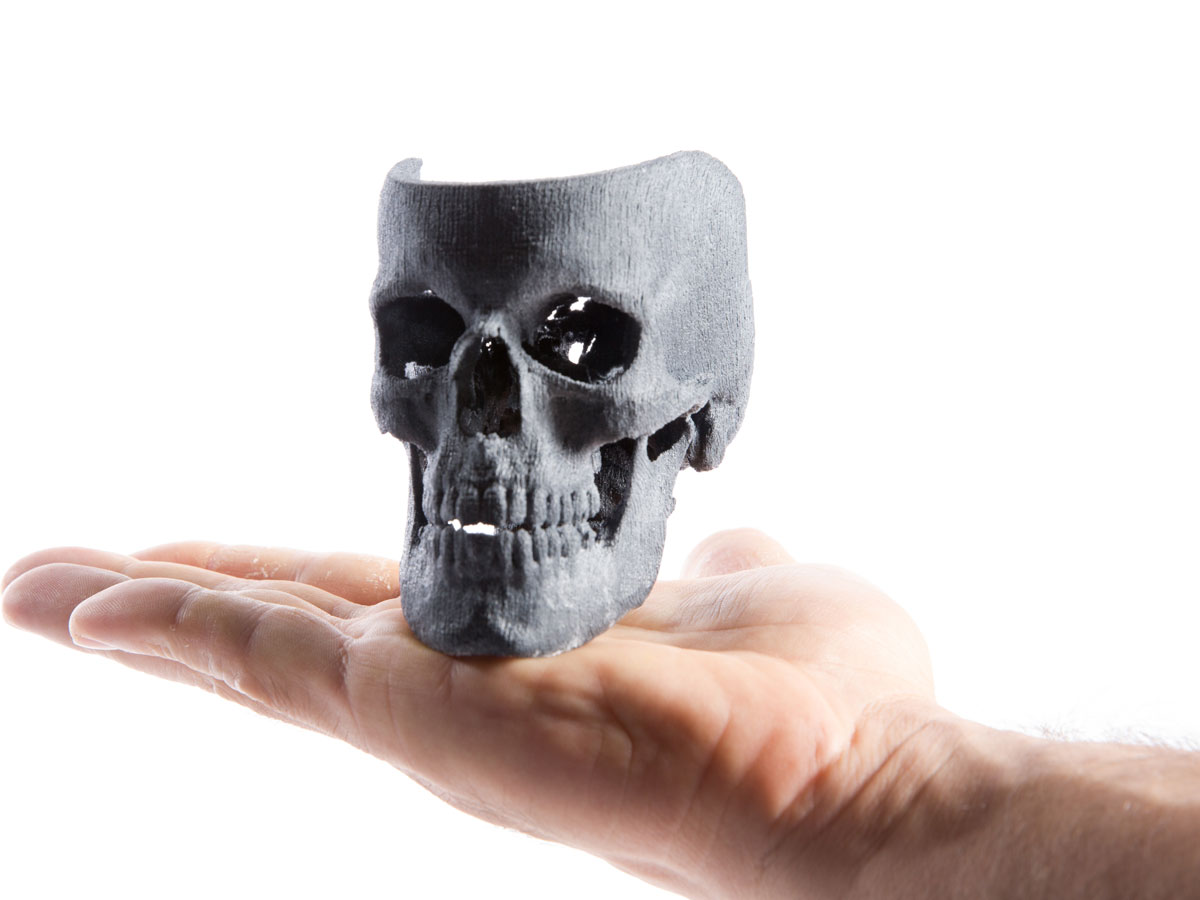

Don’t have this issue? Get it in the Maker Shed.
3D printing is all around us, opening possibilities for us to do in our garages what traditionally could only be done by large organizations. It’s now possible to 3D-print a model of your own bones, innards, and other anatomical structures starting from a CT scan 3D image, and using only open source software tools. I’ll show you how to do it using a couple of common desktop 3D printers; if you don’t have access to a 3D printer, check out makezine.com/where-to-get-digital-fabrication-tool-access to find a machine or service near you.
The Data Is Yours
So you broke your arm, got send to the emergency room, and while you were there the doctor recommended to acquire a CT scan for good measure. While you wait in the emergency room, it occurs to you that it will be interesting to see a 3D printed model of your broken bone, so you kindly ask the nurse for a copy of the CT Scan.
In the United States, you have the right to this data and the health care provider is required to give it to you within 30 days. They can charge you a reasonable fee for the process of reproduction and mailing.
U.S. laws give patients the right to access their own personal records. More specifically:
The Health Insurance Portability and Accountability Act (HIPAA) Privacy Rule gives you, with few exceptions, the right to inspect, review, and receive a copy of your medical records and billing records that are held by health plans and health care providers covered by the Privacy Rule. If you want a copy, you may need to pay for copies and mailing.
or if you are in the state of New York, the following rules apply.
In the case of a CT scan, you want to ask for the digital data, not printouts in film. This will typically be delivered to you in a DVD containing files that are encoded using the DICOM format.
Image Processing Software
Probably the most commonly used Open Source software applications for processing medical images are OsiriX and 3D Slicer (not to be confused with Slic3r, the G-code generator for 3D printers).
Both of these applications are open source. Both OsiriX and Slicer are built upon the open source toolkits ITK and VTK. However, OsiriX is only available in Mac, while Slicer is available for Windows, Mac, and Linux, which is the reason we’ll focus on it for the rest of this article.
Let’s start by getting Slicer from its download page.


